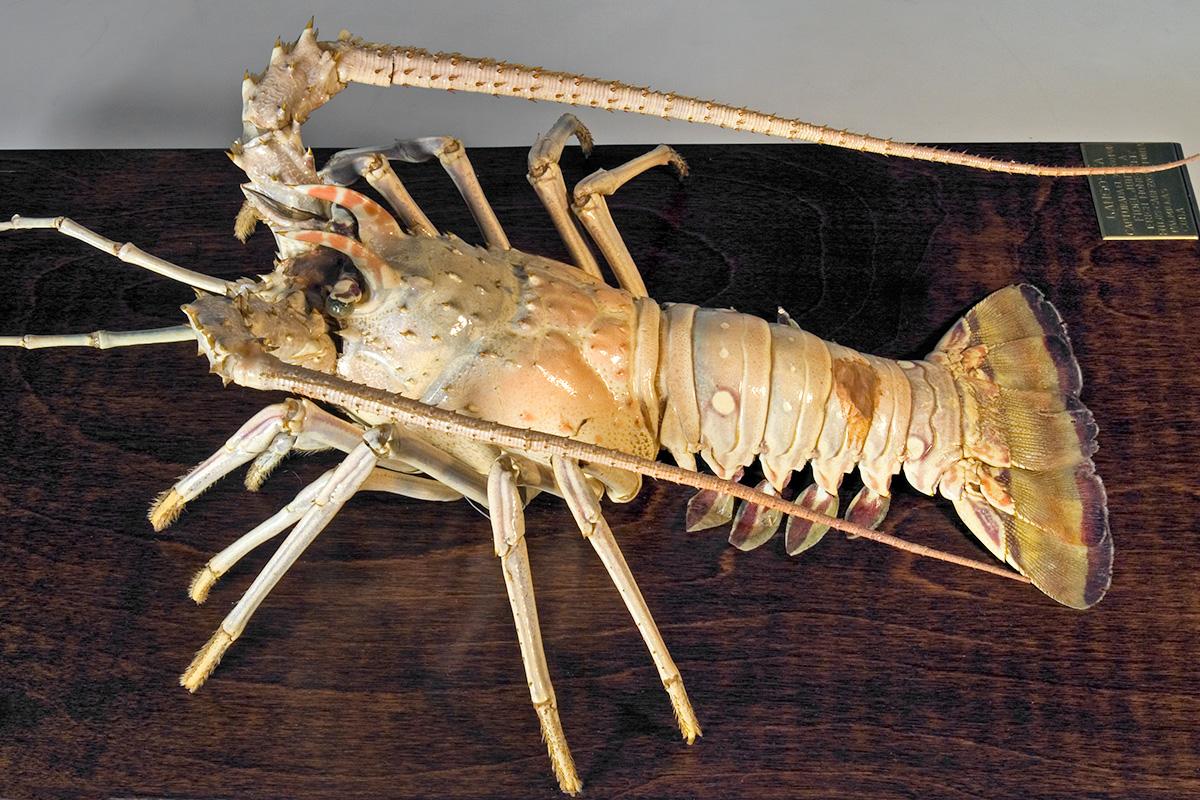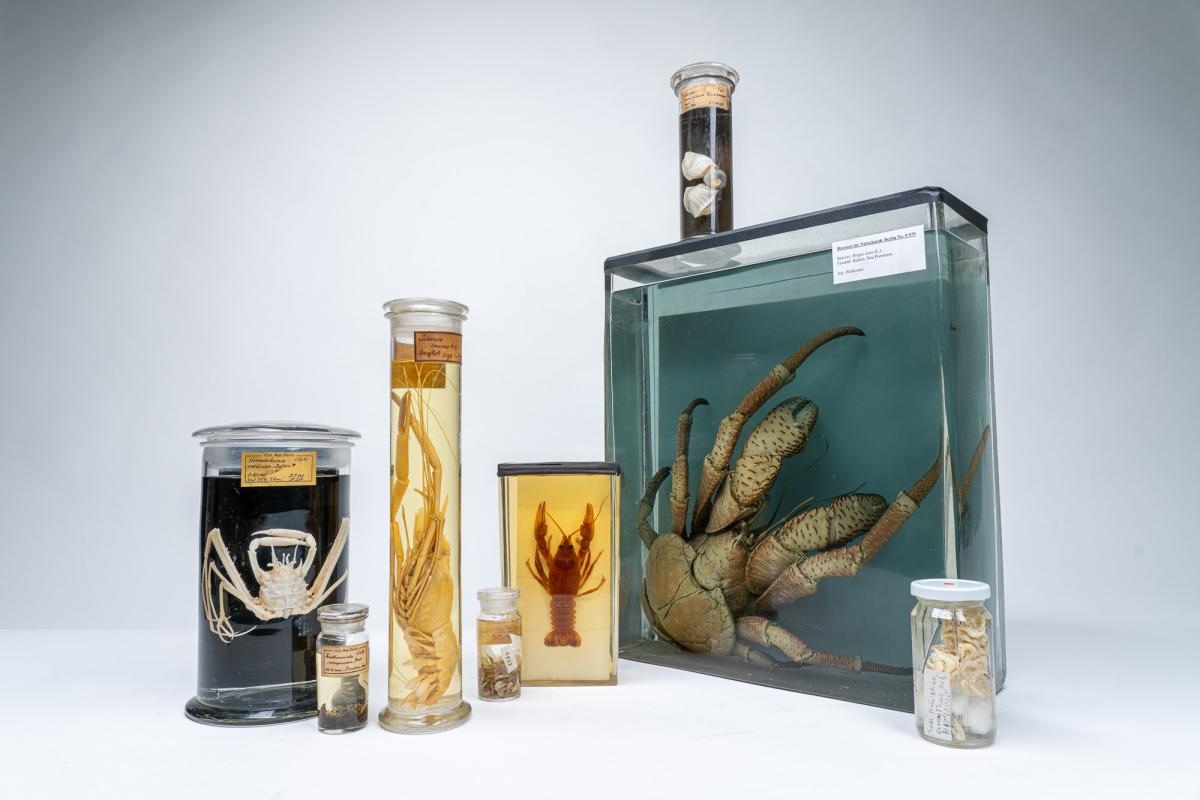The Crustacean Collection comprises over 36,500 samples with an estimated 1 million individuals, as most of the samples (collection jars with ethanol-preserved specimens) contain several individuals. The collection includes over 1,500 type specimens, around 1,500 dry specimens and around 5,000 microscope slides.
The collection contains a number of species that are listed as endangered or threatened on the IUCN Red List of Threatened Species or the German Red List of Threatened Species, including many freshwater species. The isopod species Proasellus nolli is even considered extinct or lost.
History
The foundation of the collection are the crabs of naturalist and chaplain Johann F. W. Herbst (1743-1807) from the 18th century. Many collections by eminent experts on crustaceans have since been added.
The collection also includes collections by Franz M. Hilgendorf (1839-1904) from Japan, who founded the Deutsche Gesellschaft für Natur- und Völkerkunde Ostasiens (German Society for the Natural History and Ethnology of East Asia) in Tokyo and who, after his return in 1876 became an assistant to Director Peters at the Museum für Naturkunde Berlin in the Worms and Crustacea Department. It also contains material collected by zoologist Eduard von Martens (1831-1904), who worked as curator at the Zoological Museum Berlin until his death.
Highlights
We would like to emphasize that the collection contains material from the great historic marine biological expeditions, such as the "Gazelle" expedition 1874-1876, the plankton expedition of 1889, which was the first expedition worldwide that focused on plankton, the German deep sea expedition with research ship "Valdivia" and the German South Pole expedition with the ship "Gauß" 1901-1903.
In addition, we have one of the largest collection of woodlice (Collection "Brandt") and freshwater shrimps of the family Atyidae (Crustacea: Decapoda) in the world. Other unusual examples are:
Honecker's Spiny Lobster
This spiny lobster is a case in point that some specimens may be only of minor importance for research, but are associated with interesting anecdotes. A small brass plaque on the piece of wood on which the animal is mounted reads: Langosta capturada el 30.5.80 por Fidel junto a Erich Honecker en los cabezos de Punta Palmillas Cuba (Spiny lobster, caught by Fidel at Los Cabezos de Punta Palmillas, Cuba on 30/5/1980 in the presence of Erich Honecker). Fidel is, of course, Fidel Castro, who collected the animal with Erich Honecker on Cuba. As a matter of fact, this is the lesser of the two spiny lobsters associated with the Honeckers. The bigger and more beautiful one was caught by Margot Honecker in the presence of Fidel.

Type Specimen of Homolochunia valdiviae
Homolochunia valdiviae was discovered in the deep sea off the East Coast of Africa during the first major German expedition to explore the deep seas in 1898 to 1899, also known as the "Valdivia expedition". The specimen was described in 1904 by the well-known zoologist Franz J.T. Doflein (1873-1924). The species name Homolochunia valdiviae pays homage to both the research ship and the leader of the expedition, Carl Chun (1852-1914).
Library
The crustacean library contains more than 19,000 books and reprints on Crustacea.
